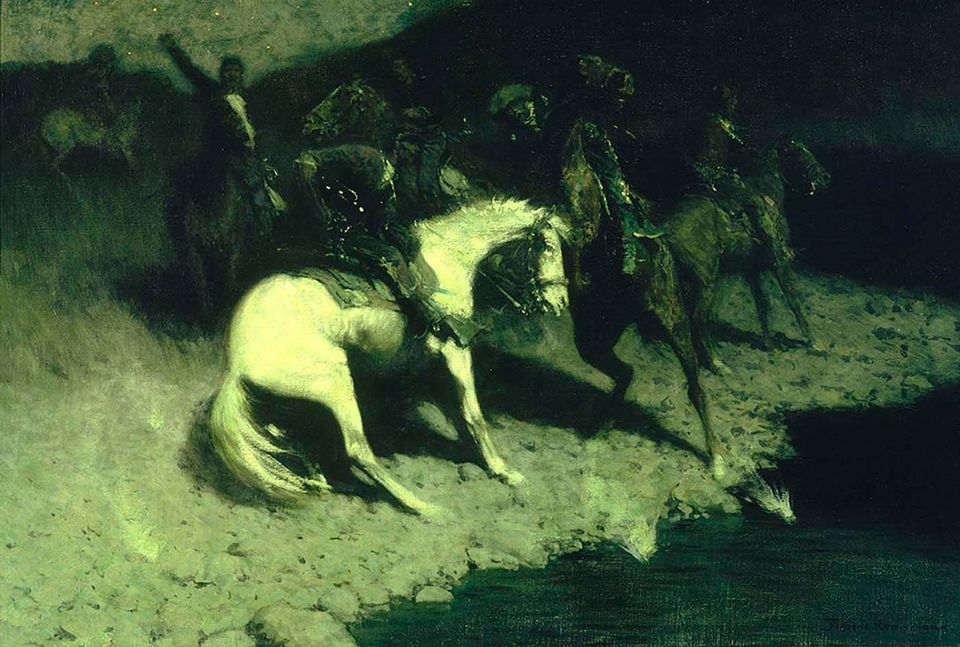

The other day, in my quest to look at works of art with fresh eyes, I asked a colleague to join me (that's one way to get new eyes) in a walk through the museum, and let me know what spoke to him. I was interested in what Jeff, a photographer, would choose. After walking through a few galleries on the second floor, we turned a corner and he fixed on a painting of an evening scene that glowed uncannily green. "That looks like a photograph taken with a night vision lens," Jeff said, referring to a lens that intensifies the light and is often used by the military during night missions. We both stepped up to take a closer look at the painting, Fired On, an oil by Frederic Remington, from 1907.
The painting features a foreground scene of two horses and riders under attack, though the enemy remains out of the frame. And, like a photograph, Jeff noted, "some of the figures at the rear of the scene are out of focus." The painting, lit by a full moon you cannot see, captures a moment of fear, perhaps most evident in the startled white horse. It is also the coat of the white horse, shining in the moonlight, that has made them an easy target. Is there such a thing as too much light?
Back at my desk, I started reading about Remington, who began his career as an illustrator before becoming a painter. As an illustrator, his colors were black, white and grey. As a painter, it took him a while to perfect his palette. In 1905 he expressed his frustration to a friend: I've been trying to get color in my things and still I don't get it. Why why why can't I get it. The only reason I can find is that I've worked too long in black and white. I know fine color when I see it but I just don't get it and it's maddening. I'm going to if I only live long enough. It was not until June 1908 that he was able to write in his diary that he had finally discovered how to do the silver sheen of moonlight.
That moon-lit sheen is certainly evident in Fired On. But something else was happening in the early years of the twentieth century: electricity was lighting up homes and cities and creating an artificial illumination that influenced artists, including Remington. This period also coincides with the advent of flash photography, which would brighten a night scene with a burst of sulphur. His treatment of light in the painting, clearly influenced by new technologies, is part of what Jeff responded to in the painting.
It was during this time, the last decade of his life, that Remington completed more than seventy nocturnes. An artist with one foot in each century, Remington's late paintings capture the meeting points between the natural and the modern worlds.

















